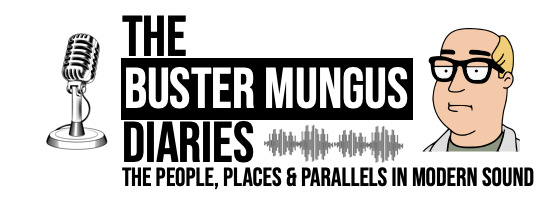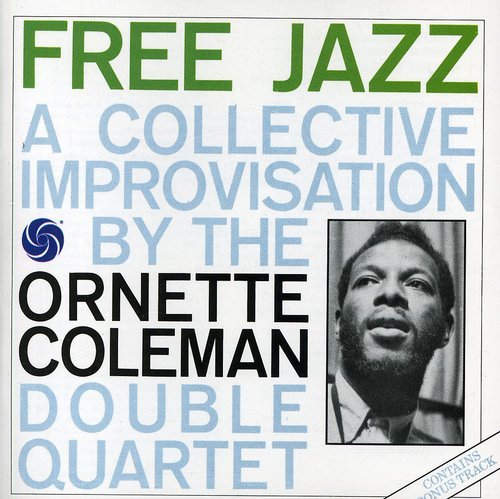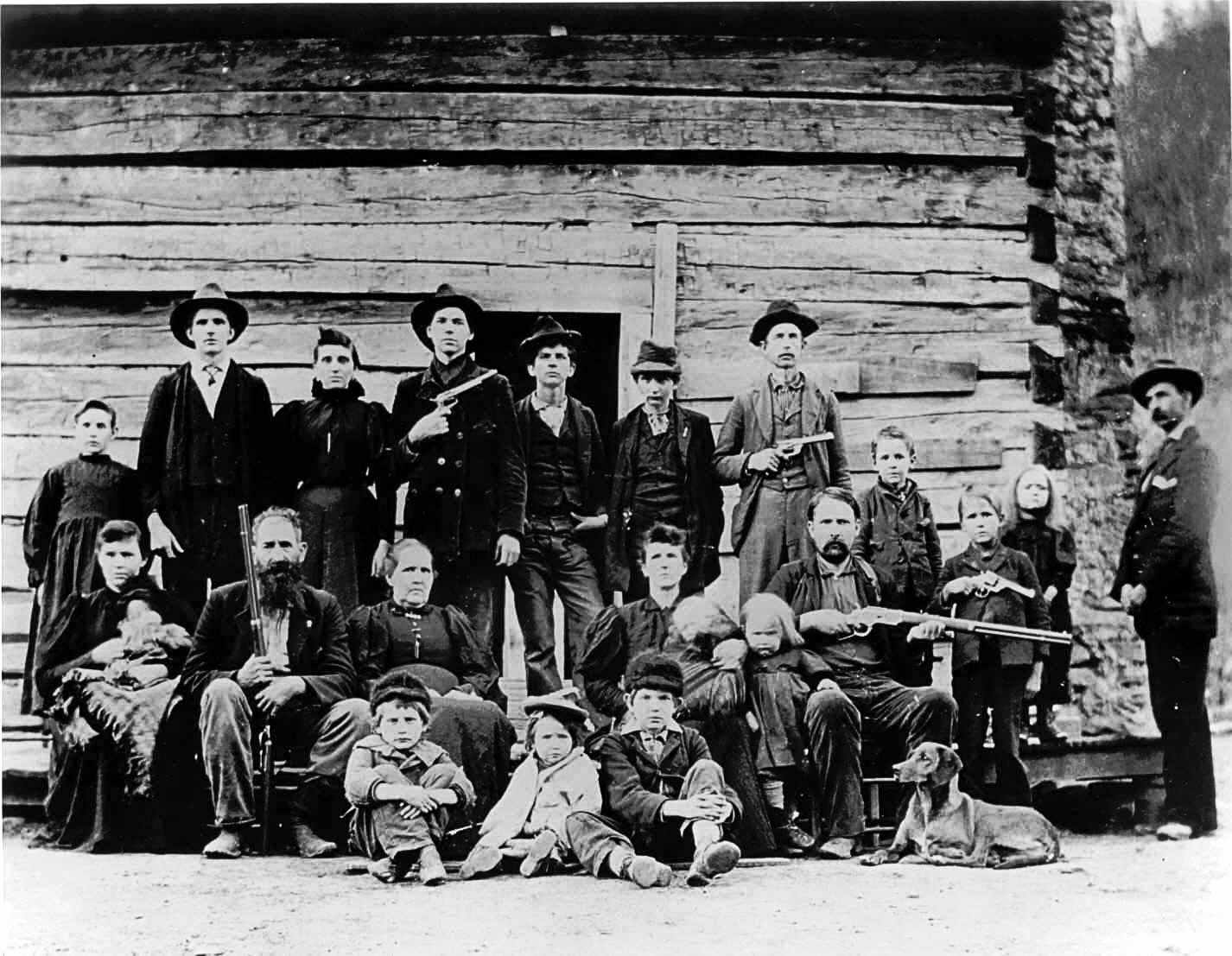Introduction
These days music fans don’t necessarily care about what genre the music they enjoy falls into, but this wasn’t always the case. There was a time where much of your identity was tied to the music you listened to.
Case in point: the rock vs. disco debate that dominated the late 1970s. Today however, it's not a “live by the genre, die by the genre” situation there might have been in the past. Perhaps the last dyeing breath of the us versus them musical debate came in 1979 and was fired by a radio DJ by the name of Steve Dahl.
Artist: Steve Dahl
Song Name: Do You Think I’m Disco
Year: 1979
Note: Humorist. Steve Dahl was a radio personality down in the United States and his, uh, parody or take on the division between genres of disco and rock and roll still. "Do You Think I’m Disco" is not available on any streaming service or for sale on any of the regular download sites. But if you were like me, you had the 45rpm single. Take a listen.
Explanation
Genres are based on the principle of repetition. They codify, organize, classify, group, past repetitions, and they invite future repetitions. These are two very different functions, highlighting respectively the qualities of artworks and qualities of experience, and they have promoted two complementary approaches to the study of genre. Therefor a recognizable genre name is powerful shorthand.
Music comes from everywhere, and so do the names we call it by. There's a longstanding cliche that only the music business needs genre names – everyone else either likes it or they don't. That is, of course, bunk, as anyone who's heard enough people trot out lines such as "I like all music except for rap and country" is aware. Not least because quite a lot of those genre names come from the artists themselves. Music genre classification is an ambiguous and subjective task at best, and at its worst divisive.
Why
Categorization using the concept of Genre is one of the most valuable tools we have for understanding and communicating with one another about music. The responsible use of music classification helps us understand creations in greater context, making it easier to identify patterns, recommend new artists to one another, and find creations that are the most satisfying to our individual tastes.
This may seem surprising for some, as it's not unusual for music fans, artists, and even some journalists to claim that the use of genres is unnecessary, elitist, or in some cases, ignorant. These detractors also frequently claim that genre classifications place restrictions on artists” creativity and diminish personal enjoyment of the music. It’s true that when done improperly, applying labels to music has the potential to be some of these things, and instances of misuse are easy to find. It's also true that genre terms, like all aspects of language, do not convey the subtlety of the listening experience.
However, none of these factors are reasonable arguments against the process of music classification, as the potential benefits far outweigh the troubles caused by their wrongful application. When used properly, music taxonomy or classification, substantially increases the clarity, recognition, and appreciation of artists’ creations.
More often, a genre name will come from a musician's works. Free jazz comes from Ornette Coleman's 1960 album of the same name;
Artist: Ornette Coleman
Song Name: Free jazz
Year: 1960
Note: Free Jazz: A Collective Improvisation is the sixth album by jazz saxophonist and composer Ornette Coleman, released on Atlantic Records in 1961, his fourth for the label. Its title established the name of the then-nascent free jazz movement. The recording session took place on December 21, 1960, at A&R Studios in New York City.
Ditto for blue-eyed soul, which came from the Righteous Brothers' 1963 LP. Not to mention acid house, which originally from Phuture's 1987 single Acid Tracks, has come to mean anything with a yammering, squealing TB-303 on it.
Artist: Phuture's
Song Name: Acid Tracks
Year: 1987
Note: Roland, the manufacturer of the TB-303, have a great article Sound Behind the Song: “Acid Tracks” by Phuture
Sometimes record labels become genre names, as with"Industrial", named after Throbbing Gristle's imprint, established in 1976. Sometimes record labels just mandate new terms. "Outlaw Country", "no wave" and"Techno" all came into use via compilation albums.
The 90s were rife with musician-coined genres. "Riot grrrl" was the name of a 1991 fanzine put together by four of that music's key players: Allison Wolfe and Molly Neuman of Bratmobile; Kathleen Hanna and Tobi Vail of Bikini Kill.
Artist: Bratmobile
Song Name: Bitch theme
Year: 1991
Note: Bratmobile was a three-piece feminist punk band that, alongside Bikini Kill and Sleater-Kinney, led the riot grrrl movement of the 1990s. Known for the brash lyricism of singer Allison Wolfe, the steady beats and sneer of drummer Molly Neuman and the ferocious yet catchy guitar riffs of Erin Smith, Bratmobile combined the power of rock music and the political-literary influence of zines to spread its message of female empowerment from 1991 to 2003.
Definitions
Music is grouped into genres to describe the music’s form, style, and cultural influence. Crucially, genre names are, on their fundamental level, a reflexive means of description and recognition, not a rigid system of boundaries.
Understanding the categorization of music depends as much upon the music itself as it does the language we use to describe it, the context in which we listen to it, and the social and economic factors affecting the psychology of its choice. Let’s attempt to put a stake in the ground regarding some terms.
Genre
Genre has a slightly more taxonomical meaning, in that it usually relates to an attempt to group music into somewhat arbitrary structurally related genres and sub genres. The genre classification tends to be made on the basis of the audience it's aimed at and can be classified based on the music's instrumentation, its particular use, or ethnicity etc. - e.g. Pop, rock, punk rock; Latin-American music, samba, tango; jazz, trad jazz, bee-bop. The online culture of today is inherently global, so genres that were distinct and contained to geographical locations are now cross-pollinated throughout the world.
If genre classification tends to be made on the basis of the audience it's aimed at let’s examine some of the first attempts made at applying genre to the music field. In doing so we need to take care of some housekeeping.
During the history of modern American recorded music, record companies struggled with the question of how to keep music segregated. I choose the term “segregated"carefully because it reflects the America of the 1920’s through the 1950’s while a case can be made that it still exists to this day. The terms originally chosen by record companies for marketing purposes were at best euphemisms.
Euphemisms: where an unpleasant or offensive thing is described or referred to by a milder term. At there worst the terms were racist and driven by division.
Reflecting the socio economic situation of a racially divided America from the 1920’s through the 1950’s, the promotional catchphrase “race music” was first applied by Ralph Peer a Missouri-born talent scout for Okeh Records. Race records were the first examples of popular music recorded by and marketed to black Americans.
While not considered racist, the term “Hillbilly”, coined in 1925 by country pianist Al Hopkins, does reflect the American class system of the 1920’s from which it emerged. Hillbilly" is a term (often derogatory) for people of various ethnicities who dwell in rural, mountainous areas in the United States, primarily in southern Appalachia and the Ozarks.
The music business needs to know what it's selling and who it's selling to.The goal of creating genres was originally tied directly to marketing;
- Keep races and their music segregated
- Help drive sales by ensuring the customer was certain of the product they were buying
The Allen Brothers, a white duo from Chattanooga, sued Columbia Records for reputational damage and $250,000 after their 1927 sophomore release was categorized as a race record instead of hillbilly music. "It would have hurt us in getting dates if people who didn't know us thought we were black," one of the brothers later explained.
Style
Musical Style refers to characteristic features of how music is played or expected to sound, i.e. its actual musical content - the set of expected musical patterns, mannerisms, expressive devices it conventionally makes use of.
Jazz, while constituting a genre, also qualifies as a style (or group of more specific styles), since it makes use of particular performance idioms and techniques.
Style are the detailed characteristics that are brought by the individuals creating the work. Therefor a dance song from the 1980s can be interpreted by applying a style to its playback, thus catapulting the same song in dozens of directions.
Illustrating this point is really easy by using a song such as "When Doves Cry" by the great Prince. Including the original, here are 5 versions of the same song interpreted 5 different ways by as many artists. The real take away here is that an artist is only limited by their imagination.
Artist: Rockabye Baby!
Song Name: When Doves Cry
Year: 2012
Note: Lullaby Renditions of Prince. Listening to the lullaby version of "When Doves Cry" you would never, ever be able to discern the true meaning behind the writer's intent. Instead you enjoy the melody.
Artist: Pursuit of Happiness
Song Name: When Doves Cry
Year: October 2005
Note: Canadian Power Pop band who imbued the Prince classic with a guitar based edge and catchy pop hooks. Although Prince is the song's writer and may never have envisioned a Power Pop version, he still wrote and structured as tune that could be interpreted in just about any style.
In 1988, they signed to Chrysalis Records. Their debut album, Love Junk, was produced by Todd Rundgren and released that year. "I'm an Adult Now" was re-recorded and re-released as a single, making it to the charts a second time.
In January 1989 the song peaked at No. 6 on Billboard's alternative songs chart. It was followed by "She's So Young", which became their biggest hit single in Canada and also received radio play in the UK and became a minor hit there, and "Hard To Laugh". The album sold over 100,000 copies in Canada and was certified platinum.
The band's follow-up album with Rundgren, 1990's One Sided Story, featured the hit singles "New Language" and "Two Girls in One." Although the album did not sell as well as Love Junk it was still a significant hit for the band.
Artist: Shark Alley Hobos
Song Name: When Doves Cry
Year:
Note: Musicians who shared a love of the sea, sharks, pirates, from New Orleans, and proudly self proclaimed hobos. The "Sea Shanty" has gained a lot of traction lately with everyone jumping on the bandwagon it seems.
Artist: The DejaBlue Grass Band
Song Name: When Doves Cry
Year:
Note: They serve up a fresh version of a Prince classic by infusing selection of"Truegrass", piled high with pop and"Newgrass" sensibility, then lightly salted with some soul-shaking gospel.
Artist: Prince
Song Name: When Doves Cry
Year: 1984
Note: Prince was asked by director Albert Magnoli to write a song for Purple Rain, to match the theme of a particular segment of the film that involved intermingled parental difficulties and a love affair. The next morning, Prince had composed two songs, one of which was "When Doves Cry". According to Prince's biographer Per Nilsen, the song was inspired by his relationship with Vanity 6 member Susan Moonsie.
Form
In music, form refers to the structure of a musical composition or performance. In his book "Worlds of Music", Jeff Todd Titon suggests that a number of organizational elements may determine the formal structure of a piece of music.
Most notable are the arrangement of musical units of rhythm, melody, and or/ harmony that show repetition or variation, and the arrangement of the instruments.
Simply... Song Form arranges the structure of songs into an easy to understand framework. Song structure is important because it organizes how songs are written while aiding in how they are recognized and appreciated. Without a song having shape, songs are can become chaotic and unlistenable.
Why is this important? Simply, song form, allows the story to be told so that people listening can better understand and enjoy the experience of the song.
You don’t have to reinvent the wheel in order to be creative, however. That’s where song form comes into play. Think of the most common types of song structures as universally agreed upon roadmaps for songs. Song Form reveals to us where the song is going.
Consider that song form helps song writers keep an overview of songs and how sections of music that make up the song will be organized.
Imagine song form as a map made up of locations that we know of as verses, choruses and bridge. What are the parts we are generally concerned with then;
- Verses are similar but differ slightly from each other
- Chorus often differs from verse
- Bridges can be very different
When discussing song forms, a system of letters are assigned to the different sections of a song. Repeated sections get assigned the same letter as was assigned on the first occurrence of that section. The letters then create a map of the overall song.
The assignment of letters is not what you would think, however. We don’t use the first letters of “V” for Verse, “C" for Chorus or “B” for Bridge, but rather the first letters of the alphabet.
For example ;
- A=Verse
- B=Chorus
- C=Bridge
Strophic / AAA / One-Part Song Form Strophic...
What was that? Strophic describes how each verse is sung to the same tune. Strophic Song Form is also called AAA Form or One-Part Song Form. AAA song form is one of the oldest sectional song forms. How far back does it go? Originally it was used in the adaption of poems, with composers setting the poems to music to perform them for the entertainment of the royal courts of Europe. The melody is repeated, in Strophic Song Form, and each time the melody repeats different words are sung to the melody. This makes it an ideal song form for story telling.
The nursery rhyme “Mary Had a Little Lamb" was first published by the Boston publishing firm Marsh, Capen & Lyon, as a poem by Sarah Josepha Hale on May 24, 1830, and was possibly inspired by an actual incident, however that can't be verified.
Artist: Stevie Ray Vaughn
Song Name: Mary Had a Little Lamb
Year: 1983
Note: Traditional Arrangement. This clip is taken from an appearance in Toronto, Canada, Live at the legendary club the El Mocambo in 1991.
AAB Form - 12 Bar Blues
The 12-bar form used in the AAB song form is strongly associated with the blues. Many Blues songs are in the AAB format. The fundamental structure of 12 Bar Blues is three four-bar lines or sub-sections. Often the first two and a half bars of each 4 bar section are vocal melody, while the last one and a half bars contains an instrumental melodic hook that gives a sense of completion for the line.
Unlike AAA or AABA song forms, which describe the overall structure of the song, AAB describes the structure of an individual verse. AAB is always used as a compound form. The common variants for 12-Bar blues are 8-Bar form and 16-Bar form.
Artist: Elmore James
Song Name: Dust My Broom
Year: 1959
Note: Originally by Robert Johnston in 1936. James played a modified “Kay” hollow-body acoustic guitar, which sounded like an amped-up version of the more "modern" solid-body guitars of today. Just raw....You can hear the guitar distort from being close to the speaker and mic in the room. One take, full of emotion. None of this Pro Tools shit.
AABA Song Form / American Popular Song Form
This is one of the most commonly used forms in both jazz and early to mid-twentieth-century popular music. The AABA format was the song form of choice for Tin Pan Alley songwriters of American popular music, an East Coast USA songwriter scene based in New York City, in the first half of the 20th century. Tin Pan Alley songwriters included songwriting greats like Irving Berlin, Harold Arlen, Sammy Cahn, Hoagy Carmichael, Dorothy Fields, Johnny Mercer, George and Ira Gershwin.
The dominance of the AABA song form faded during the 1960s. The rise in popularity of rock 'n' roll and the rise of groups like The Beatles changed the popular music landscape. Before The Beatles broke off into other song writing formats, they heavily used AABA song form in many songs. It uses this song form in several music genres including pop, jazz and gospel.
Artist: Beatles
Song Name: Eight Days A Week
Year: 1964
Note: While not a huge Beatles fan for many reasons, "Eight Days A Week " is good, solid representation of the AABA song form.
Variation on the basic structure Verse-chorus form or ABA form may be combined with AABA form, in compound AABA forms.
- AAA format may be found in Bob Dylan's "The Times They Are a-Changin'", and songs like "The House of the Rising Sun" and Gordon Lightfoot's "The Wreck of the Edmund Fitzgerald".
- AABA may be found in Crystal Gayle's "Don't It Make My Brown Eyes Blue", Billy Joel's "Just the Way You Are", and The Beatles' "Yesterday".
- ABA format may be found in Pete Seeger's "Turn! Turn! Turn!" (chorus first) and The Rolling Stones's "Honky Tonk Woman" (verse first).
- ABAB may be found in AC/DC's "Back in Black", Jimmy Buffett's "Margaritaville", The Archies's "Sugar, Sugar", and The Eagles's "Hotel California".
- ABABCB format may be found in John Cougar Mellencamp's "Hurts So Good", Tina Turner's "What's Love Got to Do with It?", and ZZ Top's "Sharp Dressed Man".
- Variations include The Pretenders' "Back on the Chain Gang" (ABABCAB), Poison's "Every Rose Has Its Thorn" (ABABCBAB), and Billy Joel's "It's Still Rock and Roll to Me" (ABABCABCAB)
Conclusion
Perhaps, in the age of endless ways to express yourself, it’s also less necessary to define your identity in your teenage years by clinging to musical genres. And notions of credibility are still important, so memes about the relative merits of Kanye and Queen will still flood the social media. But these memes somehow seem to come from an older generation and it’s astonishing, how outdated such musical conservatism seems now.
So, if genre boundaries are evaporating, and presuming post-genre music doesn’t become a genre and cancel itself out, will anything replace them? What we’ve seen in the past 20 years is that consumption methods have broadened attitudes, music has changed to reflect that, and attitudes have then changed even further.












Post a Comment